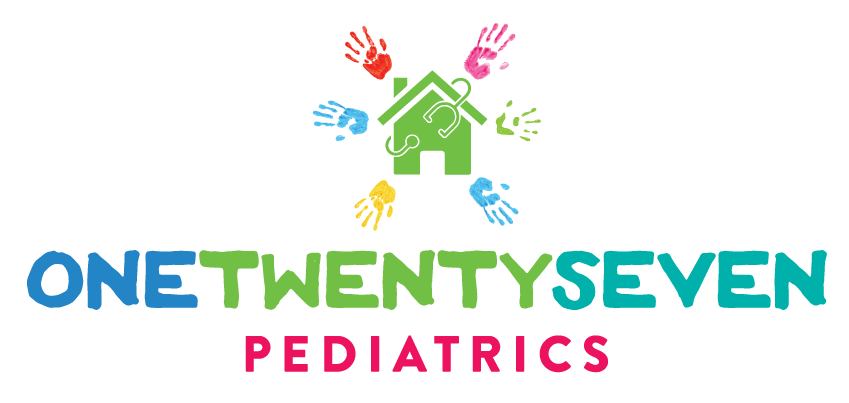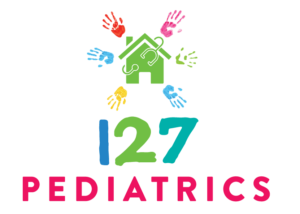One of the top concerns that I see in my breastfeeding medicine practice is mothers who think that their breasts are not producing enough milk.
A few years ago, Marissa had her first baby. She was so excited about becoming a new mother. As her pregnancy progressed, she hopped on all of the mommy blogs and followed lactation consultants on Instagram. Consuming information in this way allowed her to learn about breastfeeding on her own time. She felt like it would be okay and she was looking forward to nursing her baby for as long as her body would allow her to do so. She didn’t have a particular goal in mind, but knew enough to know that breastfeeding was the good thing to do for her baby.
Fast forward to 4 months postpartum and Marissa was struggling. Her breastfeeding journey started off rocky as she had to supplement her baby with formula in the first few days of life due to weight loss. From then on, it was a spiral of pumping, feeding at the breast and supplementing. She tried herbs and lactation cookies, but nothing seemed to increase her milk supply.
Finally, early one morning, she sat sobbing on her bedroom floor after she pumped about a teaspoon of breast milk during her 15 minute pumping session. She knew that she could no longer sustain this madness and care for herself and her baby well. As a result, she made the difficult decision to quit breastfeeding.
Top Ten Causes of Low Breast Milk Supply
In this article, we will look at potential causes for Marissa’s low milk supply. There are many factors that contribute to successful breastfeeding and sometimes the cause of low milk supply is multi-factorial.
These are the top ten reasons for low breast milk supply in breastfeeding mothers.
1. Perceived Low Breast Milk Supply
While this was not Marissa’s problem, perceived low milk supply is one of the most common reasons why mothers think that their breasts are not producing enough breast milk. Women perceive that their supply is low when their actual milk supply is adequate. In order to understand whether or not your breasts are producing enough milk, you need to understand the basics of the process of breast milk production.
In the first two days of breastfeeding, your breasts will produce small volumes of an early version of breast milk called colostrum. This high calorie, immune boosting substance is produced in low volumes of about a teaspoon every few hours in the early days postpartum.
Next, between days 3 and 5 after the birth of your new baby, your breasts will begin to produce increasing volumes of breast milk. Over the subsequent weeks, you will continue to produce greater volumes of milk for each nursing session, until the volume stabilizes around 1 month postpartum.
As this volume stabilizes, your breasts will produce between 24 and 32 ounces of breast milk per 24 hour period of time. This volume remains the same between one and six months of your baby’s life.
Breastfeeding Expectations
Some women perceive that their breast milk supply is inadequate due to changes that happen as breastfeeding progresses.
These changes include:
- Feeling like your breasts aren’t as full they once were in the earlier days of breastfeeding
- Going through periods of cluster feeding
- Fussiness at the breast
Almost always, these changes are a normal part of your breastfeeding journey. However, they could also indicate a problem if there are other parameters in play. Be sure to stay in constant communication with your baby’s doctor and lactation consultant with any concerns that you have.
2. Maternal Hormonal Health Conditions
Hormones play an important role in breast milk production. While there are many different hormones working in complex ways, certain hormones are more impactful than others. We don’t completely understand every single nuance in how these hormones function. For example, some mothers with diabetes produce very little breast milk while others nurse their babies exclusively for many months.
Health conditions such as PCOS, diabetes, and thyroid disease can potentially impact milk flow by decreasing breast milk supply. These endocrine issues can occur before pregnancy, during pregnancy, or during the postpartum period. You can read more about maternal conditions that cause low milk supply.
Additionally, hormonal changes due to the return of menstruation or starting certain oral contraceptives can also impact on milk production. When menstruation begins, women often experience a decrease in breast milk production. Generally, this decrease in supply will rebound once your period ends for the month.
Lastly, the hormonal impact of birth control on milk supply can vary among breastfeeding mothers. Be sure to discuss both hormonal and non-hormonal birth control options with both your OB and your lactation consultant. In general, hormonal birth control pills without estrogen are best for breastfeeding mothers who do not want to risk decreasing their milk supply
3. Not Feeding Often Enough
As she began her breastfeeding journey, Marissa felt like breastfeeding was her full time job. While she was feeding the recommended 8-12 times per day in the earliest days of breastfeeding, her nursing sessions began to drop off. When her baby’s pediatrician noted poor weight gain in her baby, she recommended infant formula or donor milk supplementation.
Newborn babies have a small stomach and are generally not efficient at breastfeeding early on. As a result, they require a feeding every 1-3 hours or more. As the amount of milk that they extract at each feeding increases, the feedings will gradually begin to space out. Many mothers are not prepared for this demanding schedule and don’t feed their breastfed baby often enough. Over time, this leads to a decrease in breast milk production.
4. Previous Surgery that Affects Breast Anatomy
Previous breast surgery also has an impact on breast milk production. An intact breast with milk ducts, nerves and blood vessels is required in order to produce breast milk in sufficient quantity to sustain a new baby’s growth. Marissa had breast surgery in the past. Prior to the birth of her baby, she inquired about the surgery’s impact on her ability to breast feed. Thankfully, the surgeon reported that she did not have to cut any ducts during Marissa’s surgery.
While Marissa’s surgery was not the cause of her troubles with breast milk production, other women are not so fortunate. Certain surgeries as well as previous chemotherapy or radiation to the breast can have an impact on the production of breast milk. Be sure to search out the details of your own history before setting out on your own breastfeeding journey.
5. Supplementing without Breast Stimulation
Part of Marissa’s downward decline in her breast milk production is that she was supplementing her baby with formula per her pediatrician’s recommendations, but not continuing to stimulate her breasts with the breast pump. Early on, she was triple feeding by nursing the baby at the breast, supplementing with formula and then pumping her breasts. Each feeding session took over an hour and then she had to do it all over again in 2 hours. She quickly grew weary of this routine and started gradually dropping pumping sessions.
As Marissa quickly found out, this routine of triple feeding is not sustainable. However, no one helped her to have a clear plan to increase her milk supply while ensuring that her baby was thriving. Whether the baby nurses at the breast or you use an electric breast pump, your breasts need adequate and regular stimulation in order to continue to produce breast milk. After the first couple of weeks postpartum, breast milk production is controlled at the level of the breast with supply and demand.
6. Maternal Medications
Nothing makes me sadder than seeing a breastfeeding mother whose goal of exclusive breastfeeding gets thrown out the window by a medication that causes a drop in milk production. There are many prescription and over the counter medications that are safe for breastfeeding mothers. However, there are several medications that are known to decrease breastmilk production. Medications such as high dose steroids, pseudoephedrine and certain types of mood stabilizers are known to affect breast milk supply. You can read more about medications and breastfeeding if you have any questions about a particular medication.
7. Not Enough Functioning Tissue in the Breast
In order to successfully breastfeed, your breasts require enough functioning milk making tissue in order to produce breast milk. Insufficient glandular tissue is a maternal medical condition in which a woman does not have enough of this glandular or milk making tissue. Most often this is due to a genetic difference or something that affected the breast tissue while she was developing in her own mother’s womb. In my experience, mothers don’t know that they may have this condition until they are seen by a breastfeeding professional for insufficient milk supply.
8. Maternal Stress
High stress levels can have detrimental effects on anyone, but especially breastfeeding parents. Cortisol is our body’s most active stress hormone. High levels of cortisol can inhibit some of the hormones of breastfeeding which result in low milk production. Stress can be caused by many things in the months after birth. In addition to external stress, mothers may experience added stress on their own bodies if they are not consuming adequate calories, drinking adequate amounts of fluids and getting plenty of rest.
9. Poor Milk Transfer
Likely, Marissa’s breastfeeding problems began because her baby was not transferring milk well from the breast. In order for the breasts to continue to produce milk, it needs to be removed from the breast often. Newborn babies are notorious for not removing breast milk well from the breast. Additionally, babies with certain risk factors like prematurity, jaundice or sleepiness at the breast will most likely have a difficult time with extracting human milk from the breast.
Sometimes, lactation consultants will recommend nipple shields as a temporary measure to help the baby to be able to transfer milk more efficiently from the breast. However, if you are using a nipple shield, be sure to be in close contact with a breastfeeding expert or breastfeeding specialist as these tools can lead to a decreased milk supply over time if not used properly.
An additional way to improve milk transfer is to do breast compression while the baby is eating at the breast. This will push more milk to the baby as well as keep a sleepy baby stimulated.
10. Improper Latch
Another breastfeeding challenge that Marissa experienced early on was a poor latch. Not only does a poor latch cause sore nipples for breastfeeding moms, but it can also lead to insufficient milk supply over time. If your latch is not correct for each breastfeeding session, your baby will not transfer as much milk as they would be able to do with a proper latch. This leads to a decrease in milk supply over time because the breasts are not being drained well.

Ways to Increase Breast Milk Production
In order to increase the amounts of milk that your breasts produce, you need to understand what is causing your insufficient milk supply and correct the problem. Often, you need to involve the expertise of a breastfeeding specialist to help you investigate the cause.
General ways to increase breast milk supply include adequate and frequent breast stimulation. If your baby is not adequately removing milk from the breast, you can use a hospital-grade pump or other effective electric breast pump.
Additionally, to support milk production, it is important to prioritize your health. Consume 300-500 calories above your baseline needs in the form of nutritious foods. Also drink lots of fluids and get as much rest as you possibly can. Certain herbs are thought to increase breast milk production. Even though many things have been used over the years, there is not great scientific research that proves that one herb works better than another at increasing milk supply. In addition, while lactation cookies are often tasty, they aren’t usually a healthy way to increase your calories or your milk production.
When to Seek Advice from a Healthcare Professional
Of course, I am biased, but I think that every breastfeeding mother should see a breastfeeding expert at least once before she has a baby and once after the baby is born. We can help you to anticipate and identify problems early before they become too difficult to recover from.
As a dedicated breastfeeding medicine expert and a mom who’s walked the same path, I’ve crafted something just for you – a free guide designed to demystify the numbers that often seem so daunting. “Crack the Secret Code of Breastfeeding Math” is more than just a guide; it’s a beacon of confidence on your breastfeeding journey.
This invaluable tool is here to reassure you that you’re not just on the right path, but thriving on it. Whether it’s understanding your baby’s weight gain, managing your pumping schedule, or ensuring you’re meeting those all-important breastfeeding milestones, this guide has got you covered.
Confident breastfeeding starts here. Download the free guide now!
© 127 Pediatrics, April 2024
This article is for information purposes only. Please consult your personal physician for medical advice.

Dr. Andrea Wadley is the owner of 127 Pediatrics. She is a pediatrician and breastfeeding expert and started 127 Pediatrics in July 2018 as a way to offer both pediatric and breastfeeding care to families in her community. She also offers online breastfeeding consults and is developing an online breastfeeding coaching program.


